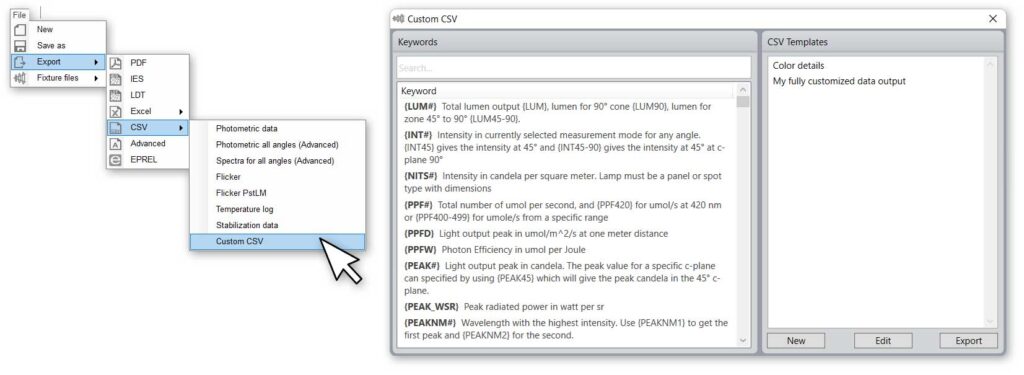Get the data out as CVS output, and work with it in Excel
If you are one of the persons that sometimes need to analyze details in your light measurement results, maybe the new Custom CSV output format is something for you. With this format, you will be able to extract almost all measurement data into a format that can be opened and processed in MS Excel.
You may enter your own texts and then all of the {KEYWORDS} that you already know from the PDF output reports. The Light Inspector software allows you to save your own CSV templates and use them over and over again.
Etablishing your own CSV templates
- Open an existing light measurement in Light Inspector
- Click File -> Export -> CSV -> Custom CSV
- Click ‘New’ and an editor opens in MS excel
- Copy-paste {KEYWORDS} representing the data that you want to extract
- If you wish, add explanatory text and units to other columns
- Graphs and diagrams are not supported in the CSV format
- When you are done, simply close Excel. The Light Inspector will now ask whether you want to save your changes
- You may always change the custom CSV template later.
- Templates are stored in your standard measurements folder. You may share the templates with other by simply sharing the CSV file

Generating CSV Outputs
- Open an existing light measurement in Light Inspector
- Click File -> Export -> CSV -> Custom CSV
- Click on a predefined CSV output template
- Click ‘Export’ and your output opens in MS excel
A good example
One example could be the extraction of information that allows you to find the MELANOPIC EDI and other circadian light exposure metrics for a given light source. Try the procedure described here.
This example not only presents you with a nice template example but also shows you how you can work with analyzing and presenting data afterward.


